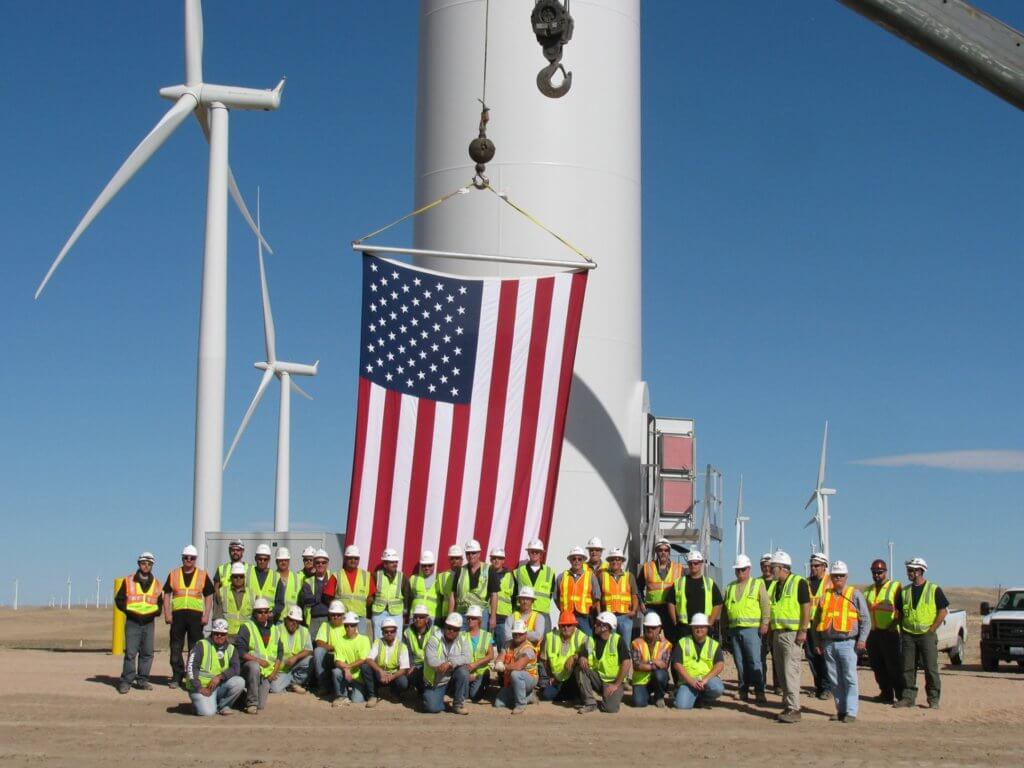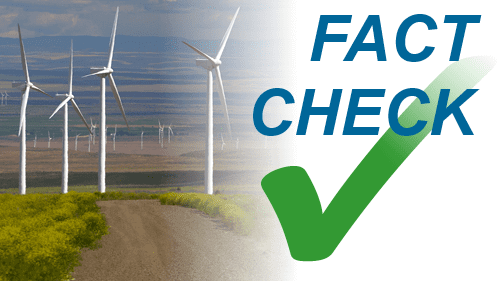Fact check: GAO report gives misleading picture of federal incentives for wind
A recently commissioned Government Accountability Office (GAO) report was particularly unusual in singling out the wind industry, since numerous federal programs encourage all the various forms of energy.
Federal energy incentives are in place because it has always been in the public interest to ensure stable, low-priced energy, which in turn supports U.S. economic growth. With respect to wind, these policies have been working, as according to a 2012 report from Credit Suisse, current wind prices are affordable and competitive with all other forms of energy.
While the GAO report may provide useful sound bites for wind power opponents, only 16 of the 82 programs it tracked were solely for wind power. In fact, the majority of programs supported renewable energy or “other activities.”
Also, as the report itself points out, the vast majority of the value to wind developers is in a single policy, the Production Tax Credit (PTC)–a policy that is threatened with expiration every year or two. That uncertainty has seriously hampered the industry’s growth.
A fair evaluation of our federal energy incentives would require a broad comparison, with historic context. Fortunately, this comparison is already available, from both government reports and reliable independent sources.
According to the Congressional Research Service, for more than half a century, federal energy tax policy focused almost exclusively on increasing domestic oil and gas reserves and production. There were no tax incentives promoting renewable energy or energy efficiency. During that period, two major tax preferences were established for oil and gas.
Moreover, over the last 90 years, federal support for the fossil fuel industry has been far greater than for renewables. In fact, according to a study of historical incentives by the venture capital firm DBL Investors, the federal commitment to oil and gas was five times greater than for renewables during the first 15 years of each set of incentives. Government support totaling nearly $600 billion has been provided to bolster the production of conventional fossil energy sources, along with $73 billion for nuclear power, according to the Nuclear Energy Institute’s own tally.
Finally, according to a 2012 Congressional Budget Office report, only four major tax preferences are permanent – three for fossil fuels and one for nuclear energy.
Most in the wind industry would agree that predictable policies, not a lot of programs, are what this country needs to realize America’s full wind energy potential.
However, despite the lack of policy certainty for the PTC, American wind power is still working. The PTC has helped lower consumer costs, created new jobs, and has driven significant private sector investment.
Last year was a record year for wind power, as $25 billion in private investment led to wind power taking the top spot for new energy installation. Also, just last week an uptick in the entire Gross Domestic Product in the fourth quarter of last year was attributed in part to wind development.
As a result, the American wind power manufacturing chain now encompasses over 550 facilities across 44 states, and 75,000 Americans are employed by the wind industry. Wind power is making our electricity grid more reliable and robust, while protecting consumers from the often volatile global energy markets.
An all-of-the-above approach to energy policy has broad bipartisan support and our future energy security depends on incentivizing access to clean, homegrown energy sources.




